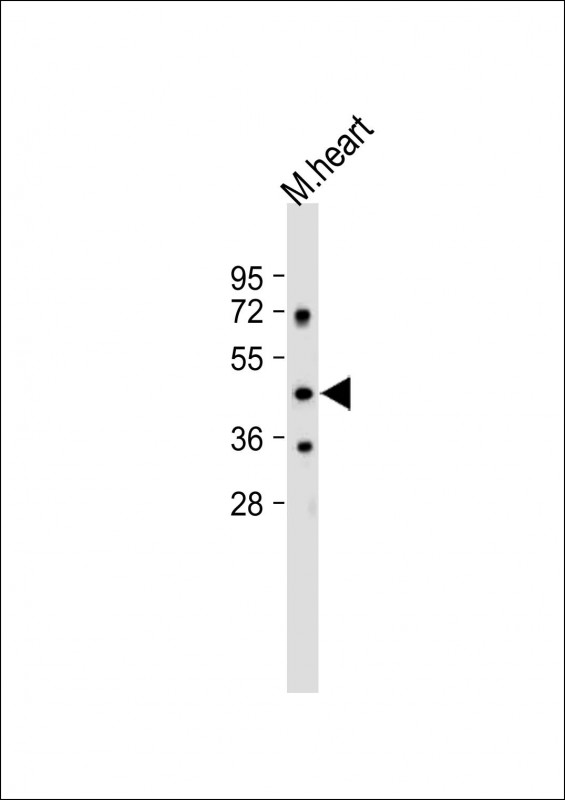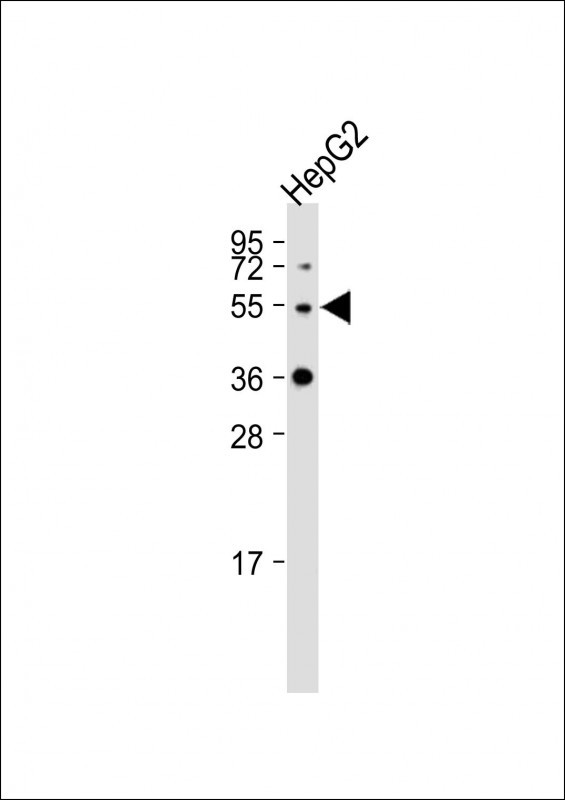PNPLA3 Antibody (N-term)
Affinity Purified Rabbit Polyclonal Antibody (Pab)
- 产品详情
- 实验流程
- 背景知识
Application
| WB, E |
|---|---|
| Primary Accession | Q9NST1 |
| Other Accession | NP_079501.2 |
| Reactivity | Human, Mouse |
| Host | Rabbit |
| Clonality | Polyclonal |
| Isotype | Rabbit IgG |
| Calculated MW | 52865 Da |
| Antigen Region | 109-137 aa |
| Gene ID | 80339 |
|---|---|
| Other Names | Patatin-like phospholipase domain-containing protein 3, Acylglycerol O-acyltransferase, 231-, Adiponutrin, Calcium-independent phospholipase A2-epsilon, iPLA2-epsilon, PNPLA3, ADPN, C22orf20 |
| Target/Specificity | This PNPLA3 antibody is generated from rabbits immunized with a KLH conjugated synthetic peptide between 109-137 amino acids from the N-terminal region of human PNPLA3. |
| Dilution | WB~~1:2000 E~~Use at an assay dependent concentration. |
| Format | Purified polyclonal antibody supplied in PBS with 0.05% (V/V) Proclin 300. This antibody is purified through a protein A column, followed by peptide affinity purification. |
| Storage | Maintain refrigerated at 2-8°C for up to 2 weeks. For long term storage store at -20°C in small aliquots to prevent freeze-thaw cycles. |
| Precautions | PNPLA3 Antibody (N-term) is for research use only and not for use in diagnostic or therapeutic procedures. |
| Name | PLPL3 |
|---|---|
| Function | Specifically catalyzes coenzyme A (CoA)-dependent acylation of 1-acyl-sn-glycerol 3-phosphate (2-lysophosphatidic acid/LPA) to generate phosphatidic acid (PA), an important metabolic intermediate and precursor for both triglycerides and glycerophospholipids. Does not esterify other lysophospholipids. Acyl donors are long chain (at least C16) fatty acyl-CoAs: arachidonoyl-CoA, linoleoyl-CoA, oleoyl-CoA and at a lesser extent palmitoyl-CoA (PubMed:22560221). Additionally possesses low triacylglycerol lipase and CoA-independent acylglycerol transacylase activities and thus may play a role in acyl-chain remodeling of triglycerides (PubMed:15364929, PubMed:20034933, PubMed:22560221). In vitro may express hydrolytic activity against glycerolipids triacylglycerol, diacylglycerol and monoacylglycerol, with a strong preference for oleic acid as the acyl moiety (PubMed:21878620). However, the triacylglycerol hydrolase activity is controversial and may be very low (PubMed:22560221). Possesses phospholipase A2 activity (PubMed:15364929). |
| Cellular Location | Membrane; Single-pass type II membrane protein. Lipid droplet |
For Research Use Only. Not For Use In Diagnostic Procedures.
Provided below are standard protocols that you may find useful for product applications.
BACKGROUND
The protein encoded by this gene is a triacylglycerol lipase that mediates triacylglycerol hydrolysis in adipocytes. The encoded protein, which appears to be membrane bound, may be involved in the balance of energy usage/storage in adipocytes.
REFERENCES
Santoro, N., et al. Hepatology 52(4):1281-1290(2010)
Valenti, L., et al. Hepatology 52(4):1274-1280(2010)
Rotman, Y., et al. Hepatology 52(3):894-903(2010)
Speliotes, E.K., et al. Hepatology 52(3):904-912(2010)
Pare, G., et al. PLoS Genet. 6 (6), E1000981 (2010) :
终于等到您。ABCEPTA(百远生物)抗体产品。
点击下方“我要评价 ”按钮提交您的反馈信息,您的反馈和评价是我们最宝贵的财富之一,
我们将在1-3个工作日内处理您的反馈信息。
如有疑问,联系:0512-88856768 tech-china@abcepta.com.























 癌症的基本特征包括细胞增殖、血管生成、迁移、凋亡逃避机制和细胞永生等。找到癌症发生过程中这些通路的关键标记物和对应的抗体用于检测至关重要。
癌症的基本特征包括细胞增殖、血管生成、迁移、凋亡逃避机制和细胞永生等。找到癌症发生过程中这些通路的关键标记物和对应的抗体用于检测至关重要。 为您推荐一个泛素化位点预测神器——泛素化分析工具,可以为您的蛋白的泛素化位点作出预测和评分。
为您推荐一个泛素化位点预测神器——泛素化分析工具,可以为您的蛋白的泛素化位点作出预测和评分。 细胞自噬受体图形绘图工具为你的蛋白的细胞受体结合位点作出预测和评分,识别结合到自噬通路中的蛋白是非常重要的,便于让我们理解自噬在正常生理、病理过程中的作用,如发育、细胞分化、神经退化性疾病、压力条件下、感染和癌症。
细胞自噬受体图形绘图工具为你的蛋白的细胞受体结合位点作出预测和评分,识别结合到自噬通路中的蛋白是非常重要的,便于让我们理解自噬在正常生理、病理过程中的作用,如发育、细胞分化、神经退化性疾病、压力条件下、感染和癌症。







